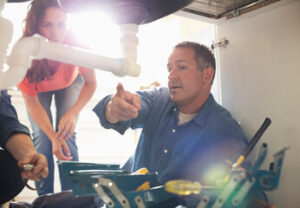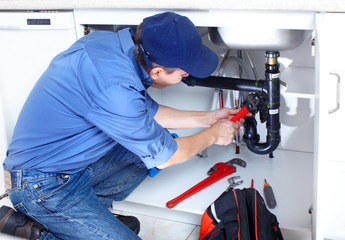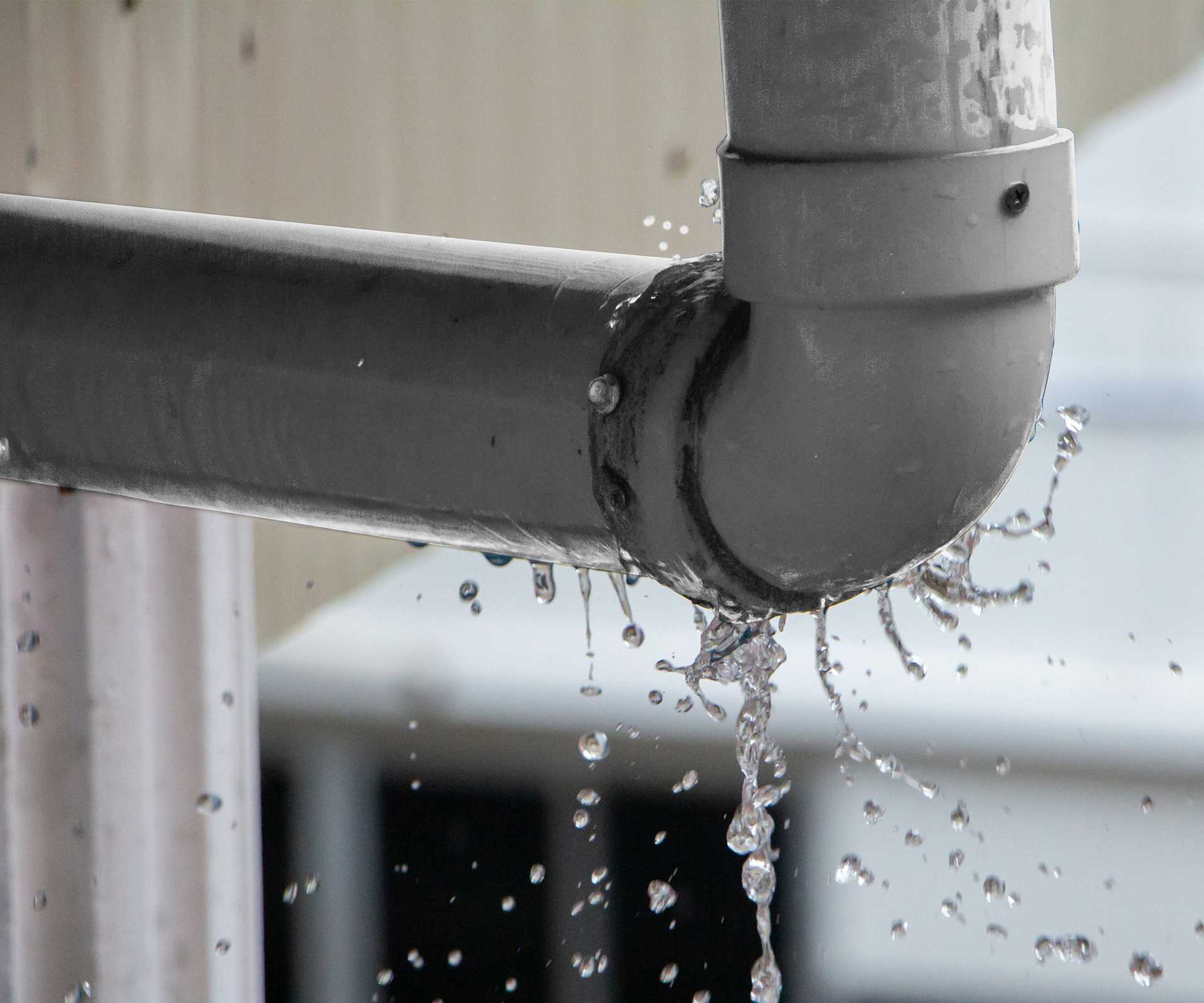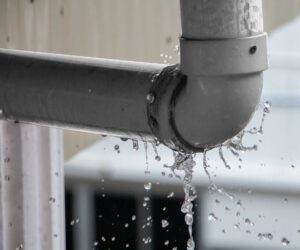Plumbing is your house’s circulatory system, running unseen behind walls and under floorboards to bring fresh water in and take wastewater out. It’s crucial for modern life, and it needs regular maintenance to function properly.
Commercial plumbing differs from residential in that it supports large-scale water use and potentially hazardous chemicals. It requires specialized knowledge, vigilance and forward-thinking management to succeed. Visit https://www.plumbing-express.com/ to learn more.
 A damaged sewer line is a serious problem that can cause flooding and sewage backups in your home. Luckily, there are several signs that you can look for to identify the problem before it becomes an emergency.
A damaged sewer line is a serious problem that can cause flooding and sewage backups in your home. Luckily, there are several signs that you can look for to identify the problem before it becomes an emergency.
A gurgling sound in your home is a sign that the water in your pipes cannot drain properly. This can be caused by a blockage in the line, or it could mean that the line is broken. In either case, a plumber should be called to inspect and repair the problem.
Another indication that your sewer line is not working correctly is if rodents are invading your house. Rats and other rodents seek out food sources in damp environments, such as inside homes with clogged or broken sewer lines. If you notice more rats or other pests in your house than usual, it is a good idea to have the line checked by a professional.
The simplest way to check your sewer line is by using a camera inspection. This method allows plumbers to see exactly what is happening inside your pipes, which can help them decide on the best course of action for repairs or replacement. A camera inspection also gives plumbers an accurate picture of the condition of your sewer lines and identifies any problems that need to be addressed right away.
If the damage to your sewer line is severe, you may notice that nearby buildings or other structures are showing signs of settlement or foundation cracks. This can occur because the damaged line is eroding the ground, which puts a lot of pressure on nearby foundations. This can lead to costly repair bills and potentially dangerous health issues for people in the affected areas.
Lastly, you should keep an eye out for standing water in your yard. This can indicate that your sewer line is leaking, which can lead to flooded basements and expensive water damage. In some cases, the sewage leaks can even reach your home and cause toxic mold growth.
It is important to note that most homeowners insurance policies do not cover the costs of sewage damage, so it’s essential to take preventative measures to keep your sewer line in good condition. The most common ways to protect your sewer line from damage are by performing regular maintenance, keeping trees and shrubs away from the lines, and having a professional plumber inspect them occasionally.
Tree Root Invasion
Tree and shrub roots often find their way into residential sewer lines in search of water and nutrients. These unwelcome intruders can cause blockages, which lead to a host of problems including unpleasant odours, sewage backups and property damage. This problem is particularly prevalent in older homes that have clay or cast iron pipes, which are more prone to cracking and leaks.
Fortunately, it is possible to prevent the costly damage caused by tree roots invading your sewer line. All it takes is a little bit of knowledge and proactive maintenance to keep your plumbing running smoothly.
One of the main causes of root intrusion into drains is trees that are growing too close to your home. As the roots of these trees grow, they can become tangled in the cracks and joints of your drains and sewer lines, which causes them to expand and break. In the worst cases, this can lead to a complete breakdown of the line.
The best way to avoid this problem is to be strategic when planting trees and shrubs around your home. Make sure to plant them far enough away from your drains and water lines that they won’t be able to invade them. It’s also a good idea to plant trees that have strong, fibrous roots that won’t be as likely to break down and penetrate your sewer line.
Another common cause of tree root invasion into drains is old, porous pipe materials. These pipes can be easily penetrated by the adventurous and penetrative roots of many different types of trees. Clay or cast iron pipes can be especially vulnerable to this type of damage, since the roots will seek out any opening they can find.
Some of the most common signs that your drains are clogged with tree roots include slow-draining sinks and toilets, gurgling sounds coming from your bathtub or toilet, or unexplained wet spots in your yard. If you notice any of these symptoms, it’s time to call a plumber for professional help. They will use a camera system to determine the location and extent of the problem, and then recommend a solution that will both repair the damage and protect your plumbing system in the future.
Cracked Pipes
The pipes that carry water throughout your home do a lot of heavy lifting, from delivering fresh drinking water to carrying waste products away. It’s important to keep a close eye on the condition of your pipes so that any damage can be repaired promptly. This will prevent any further problems and reduce the likelihood of expensive repairs down the road.
Pipes are prone to cracking for a variety of reasons. These include:
Improper installation: Pipes may be subjected to unnecessary stress and pressure if they are improperly installed or fitted. This can lead to cracked walls and floors as well as leaks.
Freezing weather: When water freezes it expands, which can place excessive pressure on pipes. This can be particularly dangerous for pipes located in unheated areas of the home, or those made from fragile materials like copper.
Age: Pipes will naturally degrade over time, which can cause cracks and other damage. The best way to prevent this is by having your pipes regularly inspected and maintained by a professional plumber.
Cracked pipes can cause serious problems for your home, including water damage, mold growth, rot, and other structural issues. They can also lead to a higher monthly utility bill due to wasted water.
If you suspect that a pipe is cracked, it’s essential to turn off your water supply immediately. This can be done by turning off the main valve in your home, which is typically located near the meter or in the basement. This will stop the flow of water and reduce the amount of damage caused by the leaking pipe.
Once the water is off, you should try to locate and identify the source of the problem. The easiest way to do this is by looking for damp spots or water stains on the ceilings and walls. It’s also a good idea to check outdoor plumbing for signs of a problem, such as unexplained lush vegetation or sinkholes. Once you’ve identified the source of the problem, a professional plumber can repair or replace the damaged section of pipe.
Flooding
Plumbing is the system of pipes, fixtures and fittings that deliver fresh water to homes and businesses and safely remove wastewater. It’s essential for sanitation, hygiene and overall health, but it can also be a source of significant problems when it malfunctions. The good news is that with proper maintenance and regular inspections, you can avoid many common plumbing problems.
The most obvious sign of a plumbing issue is a leak or clog. These problems can occur for a variety of reasons. Leaky pipes are often caused by corrosion, loose connections, or severe temperature fluctuations. They may also be the result of poor installation or improperly fitted parts.
A clogged drain can lead to flooding in your home. The main reason for this is that wastewater can’t flow away properly when it’s blocked by hair, soap scum, and other debris. It can also be the result of a broken toilet flapper valve, faulty fill valve, or cracked tank.
Flooding can also be caused by a river, lake or coastal overflow, melting snow or ice, changes to the land or environment, and infrastructure failures such as a sewer line break.
Although flooding is usually associated with extreme weather events, it can happen in any season and at any time of year. It can affect urban, suburban and rural areas and even entire nations. It has the power to destroy buildings and roads, wreak havoc on lives and property, and create dangerous and unhealthy conditions. To reduce the risk of flooding around your home, make sure gutters are free of debris and that your site is graded to drain water away from your house. If you experience any flooding, turn off your main water supply and contact a plumber immediately.



